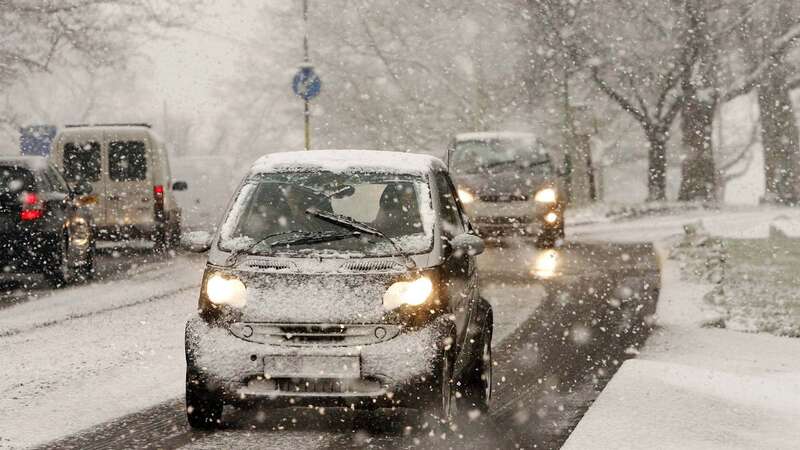

As the country shivers in freezing weather, a driving expert has urged motorists taking to the road to follow an important 20-second rule.
During the winter it's especially important to take extra care on the roads and as a bitter cold snap falls on the UK this winter drivers need to do all they can to stay safe and prevent accidents.
As the temperature falls, the risk of snow, ice and sleet increases and therefore so does that of dangerous driving conditions. Black ice is especially dangerous because it can be transparent and therefore is hard to see on the road from your car.
For this reason we need to adapt our driving to the weather. When it's icy, manoeuvres need to be gentle, speeds slow and stopping distances altered as they can be up to 10 times longer.
This means if you are driving at 70mph, it could take you almost half a mile to stop. This is where the 20-second rule applies - motorists must keep at least 20 seconds behind the car in front to be able to safely stop.
 Stormy gales wash walrus and seals ashore as urgent warnings for SNOW issued
Stormy gales wash walrus and seals ashore as urgent warnings for SNOW issued
Tim Alcock, from LeaseCar.uk, told the Daily Star: "Although it goes against basic instincts, braking is actually one of the worst things drivers can do and it won't stop a vehicle from moving on icy roads. Important advice to follow in icy conditions includes keeping a 20-second gap from the vehicle in front and pre-checking tyre grip."
The AA recommends a winter tyre tread of at least 3mm and warns not to let air out of tyres to increase grip as it's not safe and doesn't work. When driving on winter roads, it advises pulling away in second gear and easing your foot off the clutch gently to avoid wheel spin and if you have to use your brakes, apply them gently. If you are driving uphill, leave plenty of room between other cars or wait until it’s clear so you don’t have to stop. Try to avoid having to change gear on the hill and keep a constant speed.
If you are driving downhill the breakdown service again warns to leave as much room between your car and others as possible, slow down beforehand, use a low gear and try to avoid braking. If you get stuck in snow or ice, straighten the steering and clear the wheels of snow. If you have an old rug or picnic blanket in your boot, put it down in front of the tyres to try and give them some grip.
Tim adds: "Drivers are extremely vulnerable when the roads are icy, so they must take extra precautions to keep safe. Ice is one of the biggest hazards when the temperatures drop, and even the smallest amount on the road can be extremely dangerous for both motorists and pedestrians."
Did you know about the 20-second rule for driving in ice and snow? Let us know in the comments below.